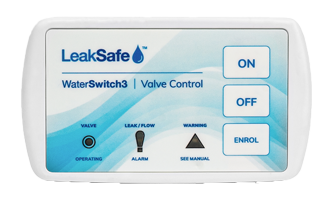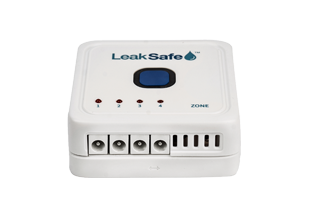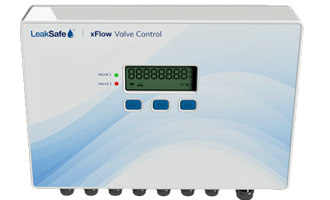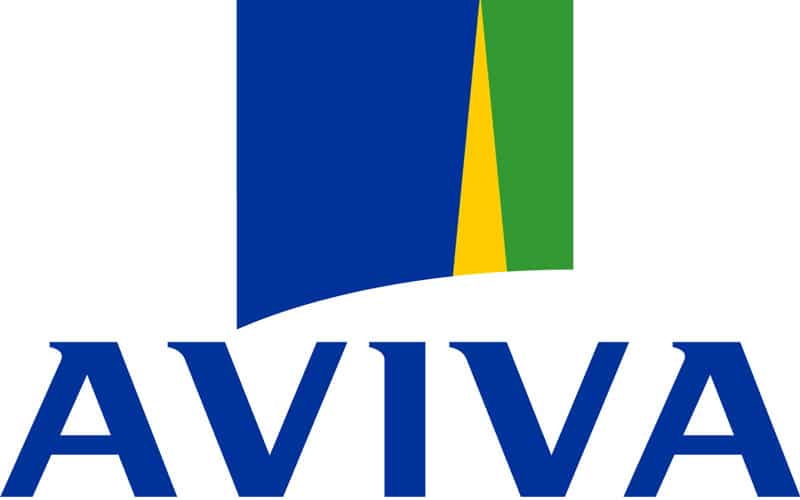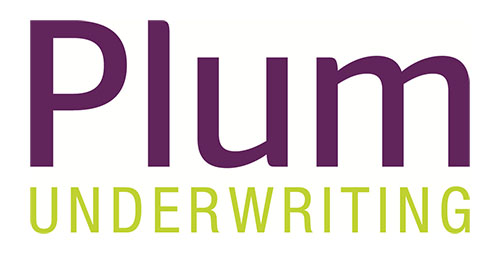The latest figures issued by the Association of British Insurers (ABI) outline that ‘escape of water’-focused insurance claims pertaining to commercial and domestic property are costing insurers no less than £2.5 million every day. Across a four-year period, this equates to a total pay-out that climbed to a staggering £930 million in 2018. According to the ABI, there has also been a “steep increase in the average cost of ‘escape of water’ claims, which now stands at £3,242 across both domestic and commercial [property].” So what’s the answer? Michael Wakley goes in search of a solution.
Laura Hughes, general insurance manager at the ABI, commented: “Claims for water leaks are a growing concern for our members given the rapidly increasing cost of the average claim. This is largely down to the higher cost of repairing homes and businesses which are using luxury fittings on an increasing basis. It’s also the case that homes have more water running around them than ever before, given the rise in the number of appliances using water and the increased numbers of en suite bathrooms and shower facilities. The trend for boxing in fitments and pipes means the early signs of a leak can go unnoticed and more damage is done before a problem is detected.”
Hughes went on to state: “The ABI has been promoting advice to consumers on the importance of having new appliances installed professionally and the need to investigate damp patches promptly. Insurers also encourage the use of leak detection devices which can be extremely effective at preventing damage. Again, they need to be fitted by a professional, but some insurers may offer help with this, and even take the presence of one of these gadgets into account when pricing the cover.”
Commenting on the ABI’s figures, Adrian Ewington (underwriting and markets director at Home & Legacy) said: “At Home & Legacy, we’ve seen the cost of ‘escape of water’ claims increase by 42%, which indicates the costs are rising even more in the mid and high net worth sector. So why is this? There are a number of factors at play here. To some extent, it’s ture that the way in which we use our properties and the quality of fixtures and fittings have driven up costs. At Home & Legacy, we’ve carried out an in-depth review of more than three years’ worth of claims data and found a clear link with unoccupancy. When properties are unoccupied and leaks go undetected, the effects of what might otherwise have been a minor water escape can be really devastating. In our experience, ‘escape of water’ claim costs increase by over 40% when the property is unoccupied at the time of loss.”
Ewington continued: “In terms of risk management, the installation of water leak detection systems is something that we, as an insurance provider, would thoroughly recommend for customers. There are many different options available today ranging from fairly simple to really clever systems which compare water use with average consumptions and react accordingly. We know how devastating it can be to return to a property which has suffered from a large escape of water.”
Highest frequency claim
Chris Andrews, head of risk solutions at Aviva, has confirmed that ‘escape of water’ claims “continue to be our highest frequency claim with steadily increasing costs.” However, Andrews added that fire brings with it the highest severity and claims cost. In fact, fire and ‘escape of water’ costs are not dissimilar. For this reason, Andrews asserted that such claims have become a key strategic priority for Aviva. “Not only for our industry, either. This issue most certainly warrants greater education, recognition and acceptance of the proven mitigation measures that can be introduced.”
Tellingly, Andrews observed: “The way we live our lives and the comforts that we now expect has driven a dramatic increase in the amount of water flowing around the built environment in increasingly complex plumbing systems, including more built-in appliances, more properties with central heating and modern methods of construction making use of flexible hoses, plastic joints and less damage resilient materials etc.” Although in the main talking about domestic premises, Andrews’ observations also apply to commercial properties.
Aviva has found that, when customers install water leak detection technology, they begin to see the benefits. However, fewer than 10% of those customers are installing them at the moment. Those that have installed them are able to quickly identify the sources of water leaks, in turn leading to a reduction in the damage caused. The upshot of this from an insurance perspective is that insurance premiums can be reduced as the insurers’ costs decline as result of there being either fewer claims or reduced costs due to leaks being detected more quickly than traditionally would be possible.
Andrews explained: “To showcase the technology we piloted leak detection at a block of flats, which formed part of a larger portfolio. We picked up three water leaks in the first month. The property owners are now retrofitting these systems as they can clearly see the value in them.”
Effective risk management
Leak detection systems are only one element in the armoury against water leaks. To have an effective risk management approach, Andrews informed Risk Xtra that there also needs to be due consideration around planning, risk assessments, emergency response, proactive maintenance, design, accessibility, installation, testing and commissioning, etc.
However, without water leak detection systems it can take weeks or event months to detect any leaks. They may even occur towards the end of a project, which is the point at which water and plumbing systems go live.
“Early warning through leak detection is a ‘prevention first’ solution”, claimed Andrews before adding: “Unforeseen damage equals unforeseen costs which can then result in a claim. Therefore, a system will help to limit the extent of repairs and risk of delays in building completion and occupation – all factors that will influence the value of a claim.”
Andrews is right to suggest that the damage caused by water leaks during this period will have a knock-on effect on businesses and individuals. The technology can be used to reduce any potentially disruptive incidents. Does this mean, then, that insurers should make water leak detection systems part of their product portfolios?
Well, it does appear that insurers are forming relationships with water leak detection technology companies. In Aviva’s case they become part of the Aviva Specialist Partner Network. LeakSafe is part of that network. Andrews outlined: “We know the impact leaks can have on a construction project or business and we want to guide our customers towards the most appropriate form of detection technology. On that basis, we want to work with those companies that take this risk seriously and be their risk partners rather than just examine risk transfer.”
Leak detection systems
Water leak detection systems can be broadly categorised into two groups. First, active systems will either use leak detection equipment in targeted risk areas in a property or measure water flow rate to a property as a whole and take action such as shutting off the water at the supply point. The second group is all about passive systems. They use the same technologies, but rather than shut off the water to the building they alert personnel on site if there’s a perceived problem.
In addition to basic leak detection, many clients are increasingly looking for management information and data that will cut the cost of locating and repairing leaks in commercial and multi-occupancy buildings for which precise location data is implicit. As a solution provider ourselves, our own efforts are now focused on providing that information by dint of using the latest in LPWAN and NBIoT technologies in a cloud-based format.
Andrews explained: “Some systems are becoming very clever and can pinpoint leaks to allow for quick response and maintenance, thereby reducing the risk of damage. Some systems also give live feedback on water usage within a building, which then allows for savings to be made on water consumption. This reduces costs to a business and may be another reason to install leak detection technology.”
Furthering this point, Andrews told Risk Xtra: “We had a recent example with a site where a passive leak detection solution was installed. On a Friday evening, after the construction team had left, they received an alarm to warn of a leak. The company was able to remotely shut off the water supply and returned to discover a broken toilet cistern. This was on the third floor and would have leaked and caused damage over several floors of both residential flats and ground floor commercial outlets. They’re now rolling out this technology on new developments.”
Best Practice tips
Andrews has offered his Top 5 Best Practice tips for implementing and managing water leak detection systems to reduce water leakage and burst pipe risks. These are as follows:
*Water leak detection systems should only be considered as part of the overall approach to managing water risk including planning, risk assessments, emergency response, proactive maintenance, design, accessibility, installation, testing and commissioning, etc
*The host organisation should ensure that it has selected the most appropriate technology for the occupation and end use of the property
*Install such detection systems at the construction phase (as it’s more expensive to install retrospectively)
*Ensure that there’s going to be an appropriate response to the detection system being triggered
*Maintain the leak detection system on a regular basis
Insurance win-win
To what extent are water leak detection systems a win-win for insurers and their customers? In answering that particular question, Andrews said: “Any losses are bad news for both insurers and customers alike. Water losses are no different and can cause extensive damage to properties and delays in projects. Then there’s the uninsured loss aspect such as management time, reputational or brand damage, excess and deductibles.”
Andrews argued that the relatively low costs of implementing water leak detection technology, and its impact on water usage for business – as well as the potential to prevent ‘escape of water’ losses from occurring in the first instance – are valid reasons for installing that technology.
He concluded by pointing out that water leak detection systems will continue to evolve. However, it’s important for manufacturers of these systems to listen to the feedback they’re given from all of the stakeholders involved. Without this feedback, it will be difficult to improve upon and further develop the technology. Andrews rightly opined: “This is everyone’s responsibility including owners, developers, designers, engineers, investment organisations and professionals in the insurance market.”
Andrews is also right to suggest that a ‘prevention first’ philosophy is the way to go, and that’s because its aim is to reduce the potential damage of water leaks – eventually leading to a win-win for insurers and their customers. Acting after the event of a water leak can lead to increased costs and high insurance premiums due to high claims costs.
In contrast, by having water leak detection systems installed, any ‘escape of water’ incidents can be stopped in their tracks or even prevented from happening. It’s therefore much cheaper as it can save everyone time, money and, ultimately, commercial relationships and brand reputations though reduced levels of disruption.
That’s why water leak detection systems are an insurance win-win for all of the stakeholders involved – including insurance customers themselves.
Michael Wakley is CEO of LeakSafe

